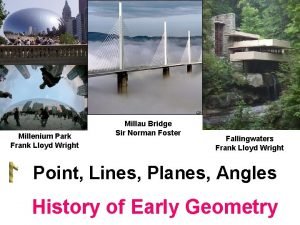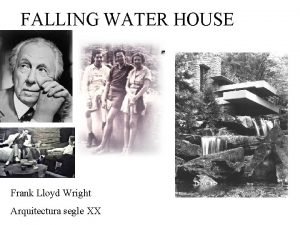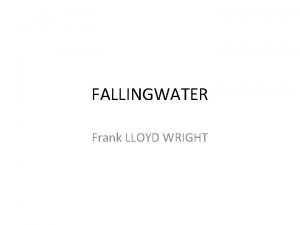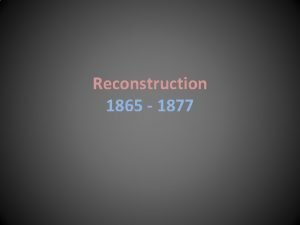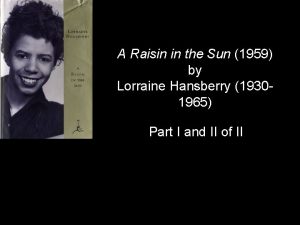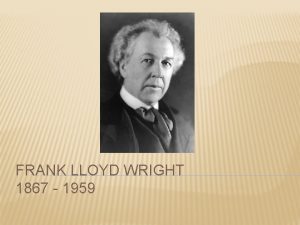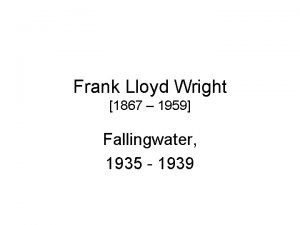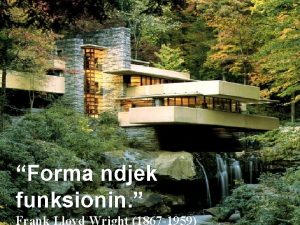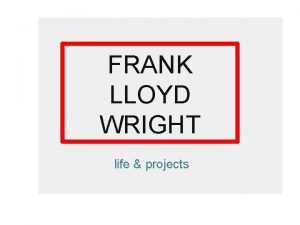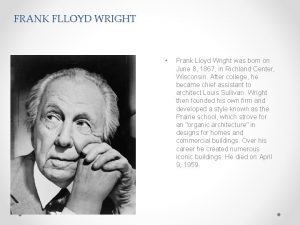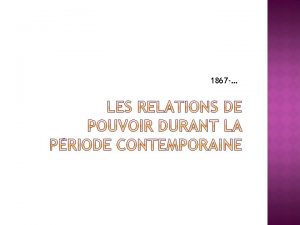FRANK LLOYD WRIGHT 1867 1959 Frank Lloyd Wright














- Slides: 14

FRANK LLOYD WRIGHT 1867 -1959

Frank Lloyd Wright Born in Richland Center, WI, in 1867 Died in Phoenix, AZ, in 1959 Studied at University of Wisconsin (Madison) Much of his designs inspired by geometry of children’s sets of blocks of many shapes Learned architecture largely as an apprentice and a draftsman

Architecture (Latin architectura, after the Greek ἀρχιτέκτων – arkhitekton – from ἀρχι"chief" and τέκτων "builder, carpenter, mason") is both the process and the product of planning, designing, and constructing buildings and other physical structures. Architectural works, in the material form of buildings, are often perceived as cultural symbols and as works of art. Historical civilizations are often identified with their surviving architectural achievements.

Fallingwater Mill Run, PA On National Register of Historic Places One of Smithsonian’s “ 28 places to see before you die” Space available was not large enough to build a foundation for house the size Wright wanted Used cantilevers to enlarge the space Only used 4 materials—reinforced concrete, sandstone, steel, and glass Wright wanted the family to live in a way that they always experienced the nature nearby, i. e. the waterfall

Fallingwater (1935)

Cantilevers cantilever (architecture) A beam anchored at one end and projecting into space, such as a long bracket projecting from a wall to support a balcony.

Driveway

Interior

Model of Fallingwater

Guggenheim Started in 1937 Space intended to be a “temple of the spirit” Spiral design like a nautilus shell, with continuous spaces flowing freely into one another "these geometric forms suggest certain human ideas, moods, sentiments – as for instance: the circle, infinity; the triangle, structural unity; the spiral, organic progress; the square, integrity. "[

Guggenheim

Under construction

Interior

Skylight
 Frank lloyd wright bridge
Frank lloyd wright bridge Frank lloyd wright falling water
Frank lloyd wright falling water Frank lloyd wright apush
Frank lloyd wright apush Matériaux
Matériaux Nunca pasa nada frank stella
Nunca pasa nada frank stella Donatello timeline
Donatello timeline Tenure of office act 1867
Tenure of office act 1867 Capital 1867
Capital 1867 Impressionism 1867 to 1886
Impressionism 1867 to 1886 Gázsterilizálás
Gázsterilizálás History of tourism 4000 bce
History of tourism 4000 bce 1934-1867
1934-1867 Cobol sections
Cobol sections Encuentro remedios varo
Encuentro remedios varo What childhood memory does beneatha share with asagai
What childhood memory does beneatha share with asagai
